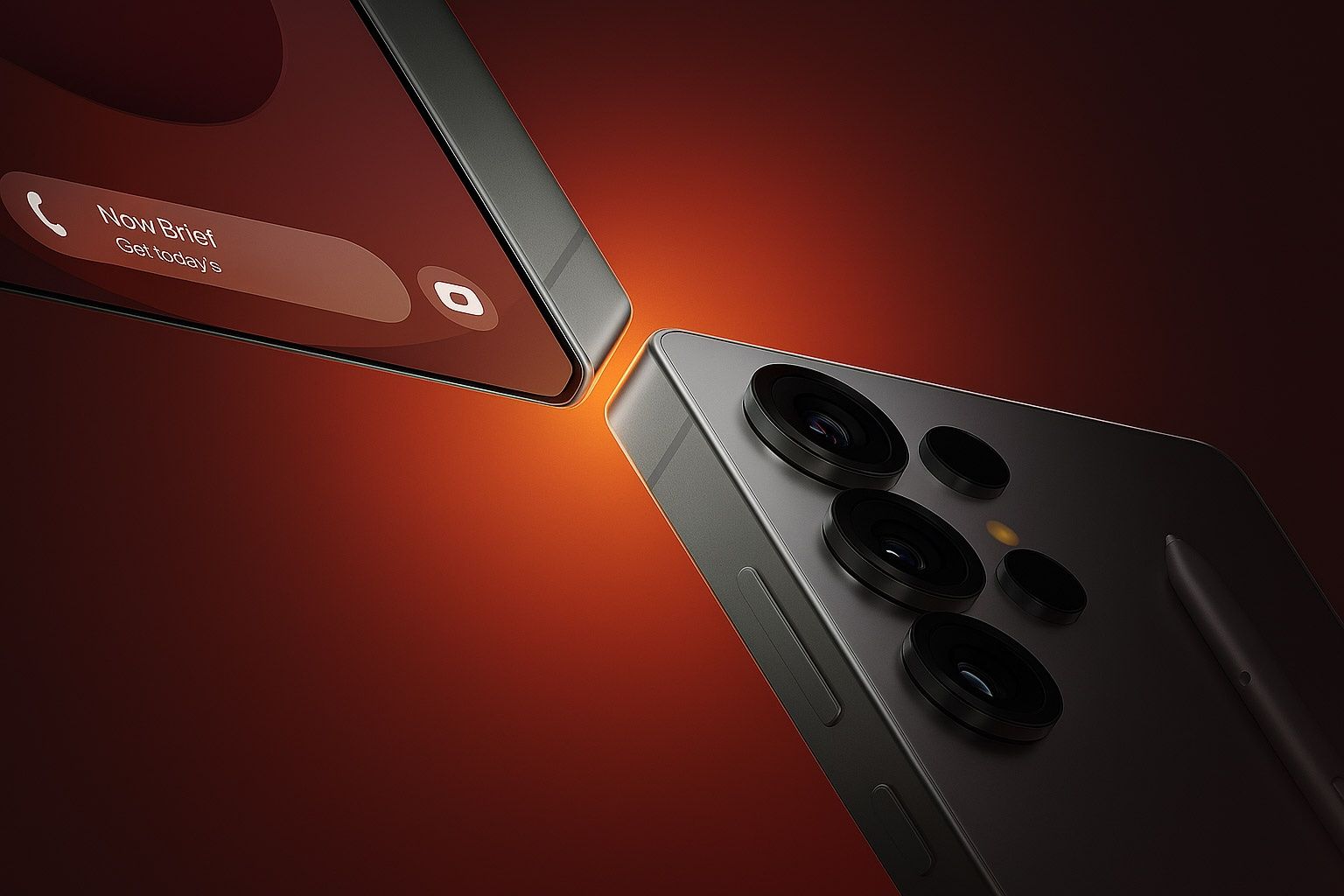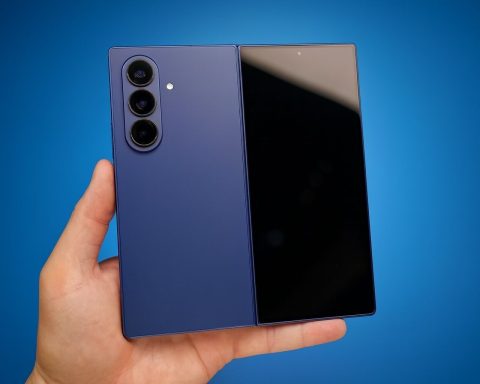Published: November 7, 2025
TL;DR
Early test firmware references suggest Samsung is exploring a new facial authentication system called Polar ID for the Galaxy S27 Ultra. The tech reportedly uses polarized light instead of a dedicated IR dot projector, targets ~180 ms unlock times, ties into an ISOCELL Vizion front sensor and a new “BIO‑Fusion Core” secure enclave routine, and is aimed at improving spoof resistance over today’s 2D face unlock. The S27 Ultra itself isn’t expected until early 2027, and Samsung has not confirmed any of this—so treat it as an informed rumor for now. [1]
What was leaked today (Nov 7, 2025)
Multiple outlets report that early test firmware for Samsung’s next‑next Ultra phone contains a reference to “Polar ID v1.0” inside the biometric framework, described in internal logs as a “polarized‑light authentication system.” The same logs suggest the module is tied to a front ISOCELL Vizion sensor and a new secure enclave routine labeled BIO‑Fusion Core, with an unlock latency around 180 ms and better protection against spoofing than Samsung’s current 2D face unlock. [2]
Industry write‑ups today broadly echo the same claims and timing, noting the feature is rumored for the Galaxy S27 Ultra, a device widely expected in early 2027. [3]
Why Polar ID is a big deal (and how it differs from Apple’s Face ID)
Unlike Apple’s Face ID—which uses a structured‑light IR dot projector to build a 3D depth map—Polar ID captures a polarization signature from your skin using metasurface optics, then verifies that signature alongside the image from the front sensor. In demos and technical briefings from Metalenz, the company behind Polar ID, the system relies on a near‑infrared flood illuminator (not a dot projector), pairs with Samsung’s ISOCELL Vizion 931 sensor, and aims to reduce component cost and space while keeping security high. [4]
In theory, that means fewer/bulkier modules up front and a simpler stack than dot‑projector hardware, which could make future designs cleaner while still enabling secure face authentication. (That design upside is an inference from the hardware differences; Samsung has not announced any design changes.) [5]
Claimed performance and security
- Speed: Internal notes point to ~180 ms unlock latency. If accurate, that’s competitive with today’s premium biometric experiences. [6]
- Spoof resistance: Because it analyzes a high‑resolution polarization signature, the system is billed as tougher to fool than 2D camera‑only unlock and is expected to work across a wide range of lighting—and even with masks or sunglasses. (These capabilities come from Polar ID’s published demos and explainer material.) [7]
- Silicon & sensor path: The background here matters: Metalenz announced work with Qualcomm and Samsung’s ISOCELL Vizion sensor family to bring Polar ID to phones, originally targeting early 2026 for first commercial deployments—though not necessarily on a Galaxy. [8]
How this stacks up against Android’s current face unlock
Most Android phones—including recent Galaxy models—use 2D selfie‑camera face unlock, which many banking and high‑security apps don’t accept. A production‑grade Polar ID implementation would give Samsung a Face ID‑class (or better) solution without the dedicated dot projector. That is why the rumor has generated outsized attention today. (Again, the implementation on an S27 Ultra is unconfirmed.) [9]
Timeline: When to expect it
Today’s reports place Polar ID on the Galaxy S27 Ultra—a phone tipped for early 2027—not on the incoming S26 series. Expectations could still shift as firmware and component roadmaps evolve, but that’s the consensus in today’s coverage. [10]
Reality check: treat it as a rumor
Even outlets covering the leak caution that the source’s track record is mixed, and some of their recent camera/S26 claims have been disputed by other well‑known tipsters. Wccftech, for example, labels the item “Plausible (45%)” on its rumor scale. As of publication, Samsung has not commented. [11]
Why it matters if it lands
- Cleaner hardware: Ditching a dot projector can free space and simplify the front sensor array. (Design implications are inferred from the hardware stack Metalenz describes.) [12]
- Security + convenience: If Samsung ships secure, fast facial authentication, users may rely less on fingerprints and PINs for sensitive actions. (Metalenz has even suggested robust facial recognition could eventually reduce the need for fingerprint sensors, though that’s a longer‑term vision.) [13]
- Ecosystem signal: A flagship Galaxy adopting polarization‑based biometrics would likely accelerate broader Android adoption. [14]
FAQ
What exactly is “Polar ID”?
A polarized‑light facial authentication system from Metalenz that reads the unique polarization pattern of your skin, verified alongside a face image. It uses a near‑IR flood illuminator and metasurface optics instead of a dot projector. [15]
Does “without IR hardware” mean no infrared at all?
No. The rumor points to no dedicated IR depth projector (the expensive, space‑heavy part used in structured‑light systems). Polar ID still uses near‑IR illumination with specialized optics and an image sensor. [16]
Will it replace the fingerprint reader?
Not necessarily on day one. Metalenz argues secure face authentication could reduce reliance on fingerprint sensors over time, but that’s a long‑term possibility, not a confirmed Galaxy S27 Ultra plan. [17]
When is the Galaxy S27 Ultra expected?
Leaks today reiterate an early 2027 window. Samsung has not announced the device. [18]
Sources & further reading (Nov 7, 2025)
- Wccftech — “Samsung Galaxy S27 Ultra Might Adopt A New Face Authentication Mechanism” (rumor rating and firmware reference to “Polar ID v1.0”). [19]
- SamMobile — “This big facial recognition upgrade may be coming to the Galaxy S27 Ultra” (ISOCELL Vizion tie‑in, BIO‑Fusion Core, ~180 ms claim). [20]
- IBTimes UK — “Samsung Galaxy S27 Ultra May Debut ‘Polar ID’ Face Unlock Without Infrared Hardware” (summary of leak, 2027 timing). [21]
- Notebookcheck — “Galaxy S27 Ultra tipped to get a major facial recognition upgrade…” (context, mask/sunglasses, polarization background). [22]
- WIRED (Feb 26, 2024) — “Polar ID Is the Face ID Rival for Android Phones” (technical explainer: metasurfaces, flood illuminator, ISOCELL Vizion 931). [23]
Bottom line
If Samsung brings Polar ID to the Galaxy S27 Ultra, it could be the company’s first truly secure, fast face unlock—arriving without the design and cost penalties of a dot‑projector stack. There’s credible tech behind the name, but until Samsung says so, it’s still a leak. Keep an eye on forthcoming S26 announcements and developer materials; they may hint at the biometrics roadmap that ultimately leads to the S27 Ultra. [24]
Editor’s note: This article aggregates and contextualizes same‑day reports from November 7, 2025, and clearly labels the information as rumor where appropriate.
References
1. wccftech.com, 2. wccftech.com, 3. www.ibtimes.co.uk, 4. www.wired.com, 5. www.wired.com, 6. wccftech.com, 7. www.sammobile.com, 8. www.wired.com, 9. www.phonearena.com, 10. wccftech.com, 11. wccftech.com, 12. www.wired.com, 13. www.wired.com, 14. www.phonearena.com, 15. www.wired.com, 16. wccftech.com, 17. www.wired.com, 18. wccftech.com, 19. wccftech.com, 20. www.sammobile.com, 21. www.ibtimes.co.uk, 22. www.notebookcheck.net, 23. www.wired.com, 24. www.sammobile.com








